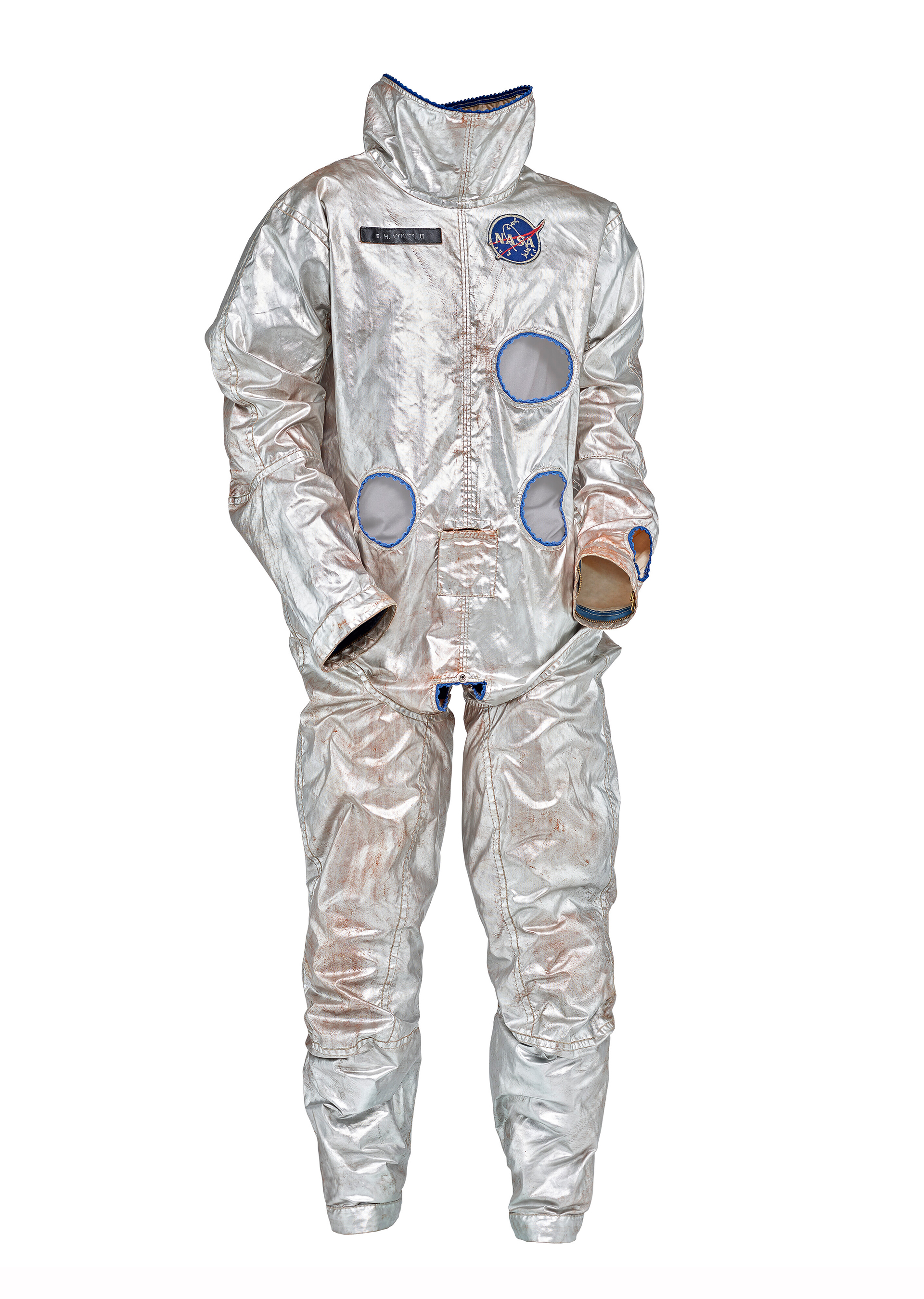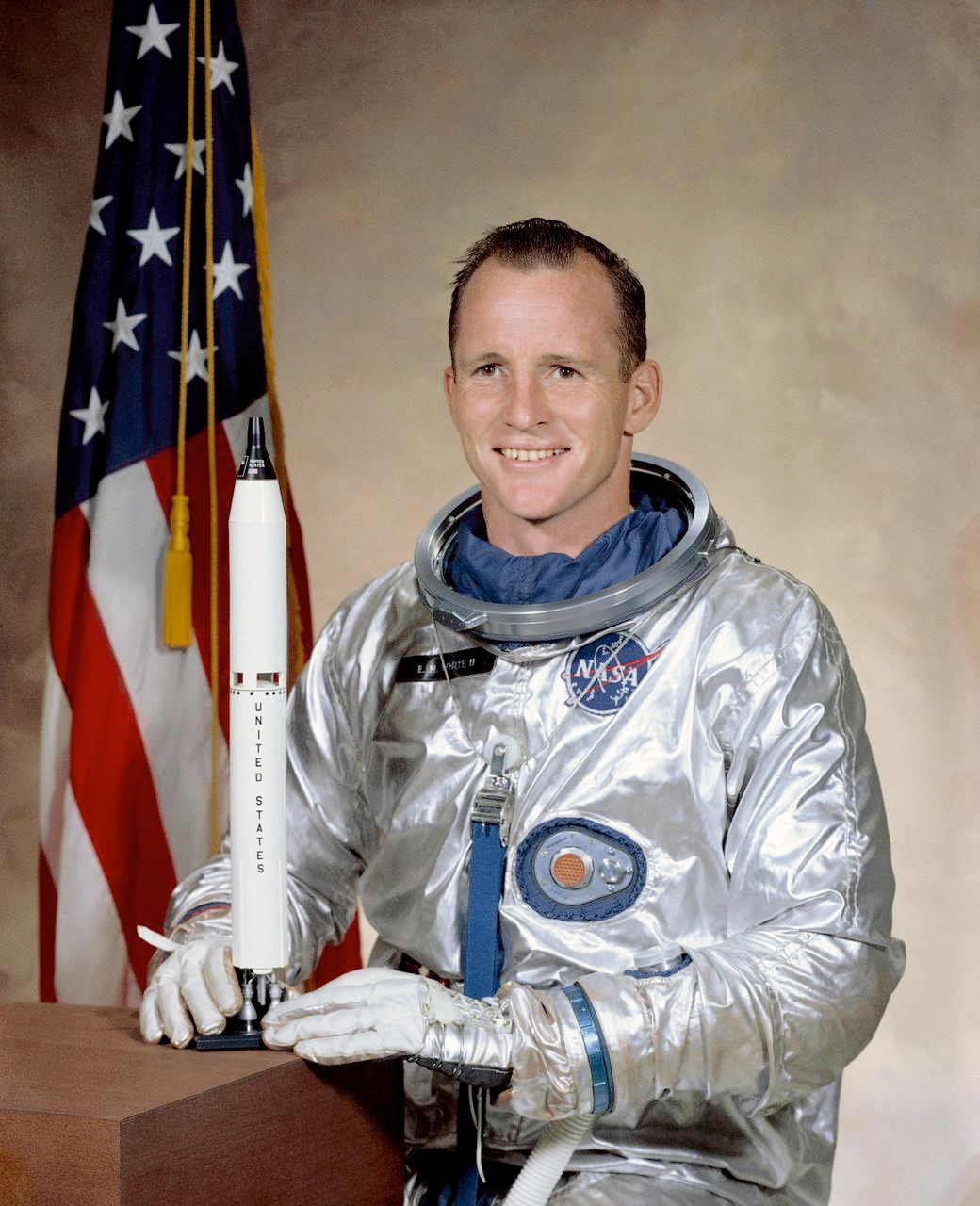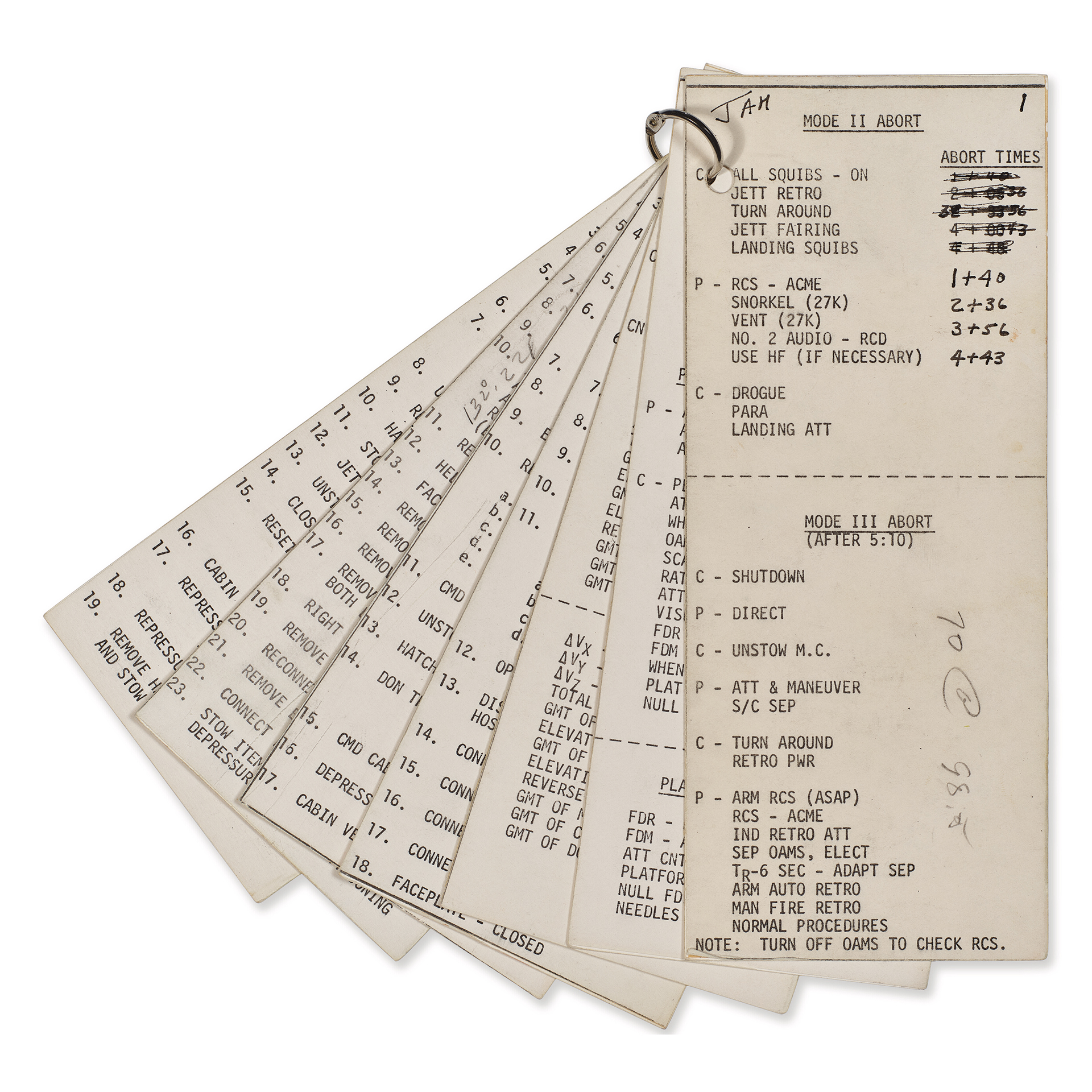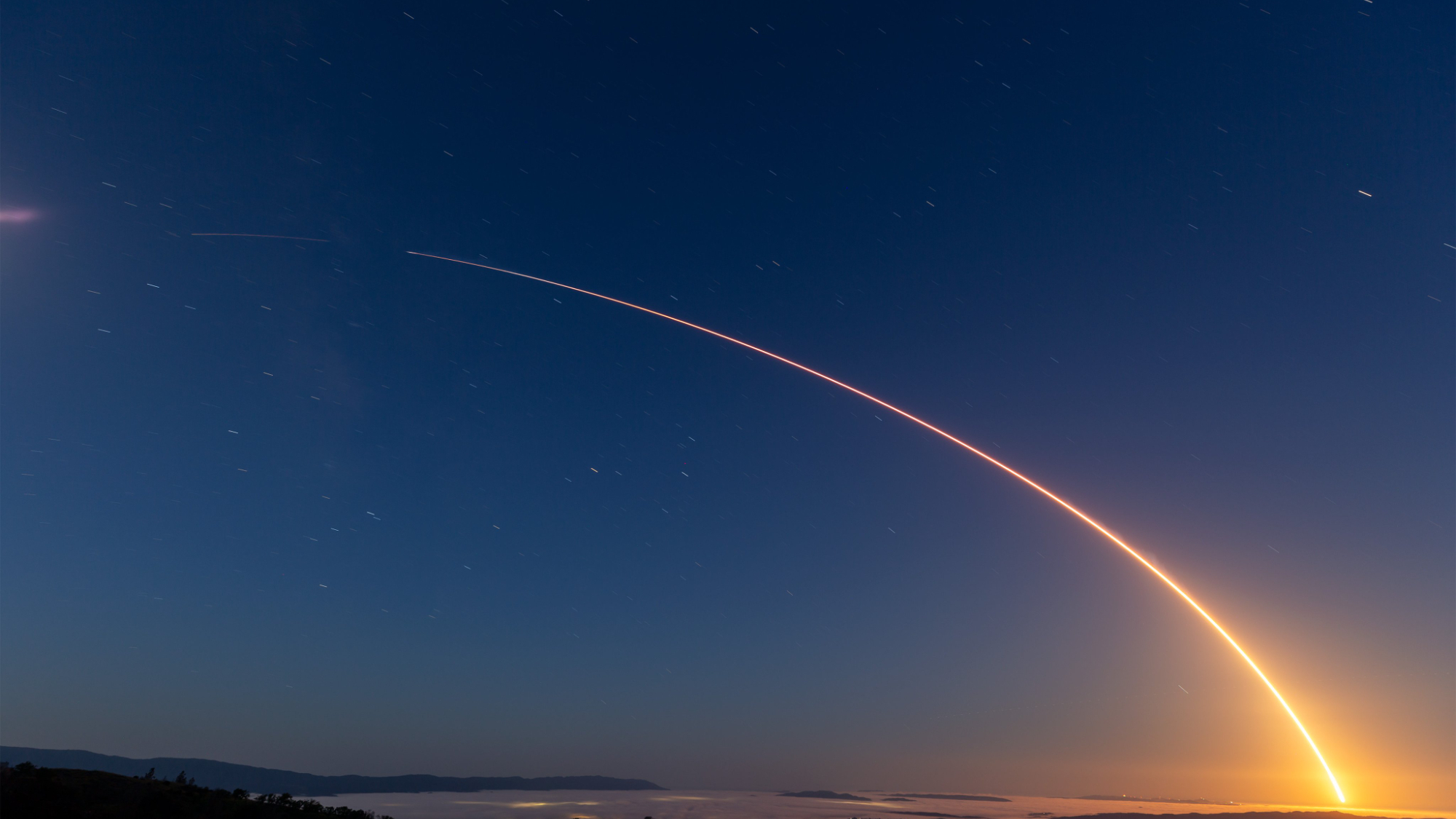Microsoft co-founder's space art, artifacts to be sold by Christie's
More than 50 lots in the Paul G. Allen collection are space related.

Visions of humanity's future in space and historic spaceflight artifacts are heading for auction from the estate of Paul G. Allen.
Christie's on Thursday (Aug. 15) released the catalogs for three upcoming sales devoted to Allen's sprawling collection of "groundbreaking scientific and artistic achievements throughout history." The "Gen One: Innovations" auctions include a live "Pushing Boundaries: Ingenuity" sale in New York on Sept. 10 and two online auctions themed to the history of computing and the art of the future that are open for bidding through the same date.
"This is a collection that was assembled to illustrate the inspiring nature of scientific exploration and achievement that were such a part of Paul Allen's remarkable life," Christina Geiger, head of Christie's rare books and manuscripts department, said in a statement provided to collectSPACE.com. "The works of art and objects related to space are emblematic of the collection, since they put us in touch with the very boundaries of human experience."
Allen, who died in 2018, is perhaps best known for co-founding the Microsoft Corporation with Bill Gates in 1975. During his lifetime, he also expressed his interest in space and exploration by investing in projects such as Stratolaunch, which developed the world's largest operating aircraft originally intended to support an air-launched space transportation system, and SpaceShipOne, the first crewed private space plane that claimed the Ansari X Prize in 2004.
Between the three upcoming sales, more than 50 of the lots offer art, memorabilia and artifacts related to space.
Related: Paul Allen: Billionaire backer of private space ventures

Have spacesuit (layer), will EVA
Among the featured lots in the "Pushing Boundaries: Ingenuity" live auction are part of a spacesuit and the cue cards used by the first American to walk in space.
Astronaut Edward H. White II wore the offered silvery spacesuit cover-layer for his NASA portrait taken on Sept. 10, 1964. Nine months later, while wearing a similar garment but with a white Nomex outer layer, White exited the Gemini 4 spacecraft and conducted a 20-minute extravehicular activity (EVA).
Although not a complete suit, the unflown cover layer retains its original NASA "meatball" patch and its "E.H. White, II" name tag. An internal label identifies the garment as having been made by the David Clark Co. and that it was sized for White in January 1964.
White may have also worn the cover layer for part of his training at NASA's Manned Spacecraft Center (today, Johnson Space Center) in Houston. According to Christie's, Allen bought the garment in 1991 from the estate of an area auto mechanic who befriended the Mercury and Gemini astronauts through his work on their Corvettes.
Christie's expects White's spacesuit cover layer will sell for $80,000 to $120,000.

Allen also owned the original and complete set of procedures that White followed to perform his June 3, 1965 spacewalk. Certified by White's crewmate, Jim McDivitt, as "flown on Gemini IV for the first USA EVA," the 13-page checklist on seven 3.5-by-8-inch (9 by 20 centimeters) cue cards includes notes written in pencil during the flight.
The instructions detail the steps that McDivitt and White followed to prepare for the spacewalk, including checking the integrity of both of their spacesuits, as the Gemini spacecraft did not have a separate airlock. The cards also outline what the astronauts were to do when White returned to the capsule, a moment he famously described as "the saddest moment of my life."
The full set of cards, held together by a single ring binding, was acquired by Allen at a 2015 auction for $47,500. Christie's estimates that the checklists will now sell for $60,000 to $80,000.

Space-flights of fancy
The "Over the Horizon: Art of the Future from the Paul G. Allen Collection" online sale presents a three-week window for bidders to vie over paintings and other art works that captured space exploration from new and prophetic perspectives.
The auction includes numerous original illustrations by artists Chesley Bonestell and Fred Freeman from the Collier's magazine series "Man Will Conquer Space Soon!" which ran from 1952 to 1954 and is credited with selling the U.S. public on the country's burgeoning efforts to leave Earth.
Allen's collection also included 14 illustrations by Freeman for German rocket pioneer Wernher von Braun's 1960 book "First Men to the Moon" and a near copy of "Saturn as Seen from Titan," a circa-1952 painting by Bonestell that replicated what is considered to be his most iconic work, a piece that has been called the "most famous astronomical painting ever created." (The original 1944 painting is in the collection of the Adler Planetarium in Chicago.)
Christie's estimates the Bonestell painting will sell for $30,000 to $50,000.

Space artist Robert McCall is also represented in the online sale with his 1986 oil painting, "Pioneering the Space Frontier No. 8." Signed and dated by McCall, the 46-by-72-inch (117 by 180 cm) futuristic scene of an active space settlement was sold to Allen for $46,250 in 2015.
Get the Space.com Newsletter
Breaking space news, the latest updates on rocket launches, skywatching events and more!
Follow collectSPACE.com on Facebook and on Twitter at @collectSPACE. Copyright 2024 collectSPACE.com. All rights reserved.
Join our Space Forums to keep talking space on the latest missions, night sky and more! And if you have a news tip, correction or comment, let us know at: community@space.com.

Robert Pearlman is a space historian, journalist and the founder and editor of collectSPACE.com, a daily news publication and community devoted to space history with a particular focus on how and where space exploration intersects with pop culture. Pearlman is also a contributing writer for Space.com and co-author of "Space Stations: The Art, Science, and Reality of Working in Space” published by Smithsonian Books in 2018.In 2009, he was inducted into the U.S. Space Camp Hall of Fame in Huntsville, Alabama. In 2021, he was honored by the American Astronautical Society with the Ordway Award for Sustained Excellence in Spaceflight History. In 2023, the National Space Club Florida Committee recognized Pearlman with the Kolcum News and Communications Award for excellence in telling the space story along the Space Coast and throughout the world.










